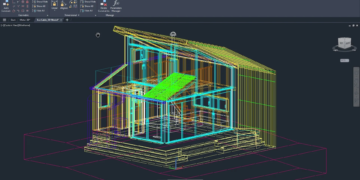The supporting hardware in telecom and data transmission systems is being reevaluated due to the global rollout of 5G infrastructure and since 5G is a global phenomenon now. One of the most overlooked yet important aspects of these systems is industrial door hardware systems. These components are critical for access security, weather seal, operational efficiency, and long-term durability for the telecom and electrical enclosures.
The critical telecom infrastructure are in urban base stations and rural relay points. All these must be operational 24/7, and the physical components that protect them must be reliable and as intelligent as the technologies they are protecting. With the right design, hinge systems make cabinets reliable in demanding conditions.
Purpose of Industrial Door Hardware in the 5G Framework
5G infrastructure comes with added features like higher bandwidths, more compact devices and higher energy requirements. The cabinets for telecom equipment that contain delicate devices like transceivers, routers, and backup systems are easily accessible for the technicians and at the same time adequately protected.
Industrial door hardware is essential in allowing secure access while protecting the cabinet’s structure. The wrong choice of hinges may result in:
- Door closing problems and ineffective sealing
- Excessive wear from movement or locking mechanisms
- Weakened security for access control
- Challenge for maintenance in the field
For precision and high uptime environments, such breakdowns are intolerable. Therefore, the design of cabinets must incorporate the entire hinge system as one of the main design elements, along with the power supply and signal routing.
Critical Success Factors for the Telecom Cabinet Hinge Systems
While selecting or designing hinge systems for telecom and 5G cabinets, several performance aspects must be analyzed, such as mechanical strength, integration with locking systems, and protective measures against the environment.
Load Bearing Capacity and Cycles of Operation
Doors of the telecom cabinets are often made of reinforced or double-walled panels. As such, the weight of the door is greater and will contribute greater load to the hinge. Therefore, hinges must support static loads as well as dynamic loads and repeated opening and closing cycles without degradation. Industrial high cycle hinges will be more effective in preventing sagging and fatigue.
Vibration and Shock Resistance
Certain telecom installations such as those on rooftops or poles are exposed to vibration. Hinges should have included damped or rigid tolerances to stave off permanent loosening over time. The cabinet’s anti-vibration seal and alignment are preserved by robust industrial door hardware that sustains mechanical integrity under vibration.
Corrosion And Weather Resistance
Stainless steel or specially coated materials are recommended to protect outdoor cabinets from humidity, rain, dust, salt, and UV rays. Environmental sealing requirements IP/NEMA also applies to hinges and locks which are critical for maintaining enclosure integrity.
Integrating Hinge Systems with Electrical Panel Locks
For an effective enclosure system, coordination between hinges and locking mechanisms is paramount. For high-security telecom sites, it is critical that electric panel locks and hinges work together as access control mechanisms and for safeguarding sensitive components.
For effective integration, consider the following:
- Alignment and Tolerance: Bad hinge construction can lead to offset alignment with panel locks, resulting in compromised security or damage to locking components.
- Sequential Operation: Certain locks need the doors to close in a particular order. Hinges must permit the sequence to occur without requiring additional effort.
- Tamper Detection: Advanced locks can include systems with sensors, interlocks, and locks with hinges that allow some slack for the cables and movement to avoid blockage.
- Ease of Maintenance: Tight hinges should enable the removal of doors and allow wide angles of openings to provide easy reach to locked compartments.
Meeting the functionality of electrical panel locks and hinges ensures that the systems will work well under all conditions.
Smart Hardware Considerations for Telecom Enclosures
Supporting hardware for telecom and 5G in the market should be updated to keep up with the advancing systems. Such systems offer industrial door hardware that is not solely mechanical and is maturing into a networked environment.
Integrated Monitoring
Closed and open door status monitoring, along with door tampering and vibration checks can be done through smart hinges. This information can be collected and sent to centralized monitoring systems for automated alerts, enabling smart monitoring.
Remote access and lock Control
Swing and motorized lock handles can be integrated to some hinge designs. This aids operators to enable locks and control access remotely, thus eliminating the need to send out technicians for physically inaccessible locations.
Modular and Scalable Designs
Telecom operators are offered great flexibility with the scaling of their network, thus modular hinge systems enable scaling of the cabinet designs from small junction boxes to large full-scale server enclosures with reduced intricacy of function and increased classified access.
These innovations are shaping the next generation of industrial door hardware to accommodate IoT systems and maintenance automation.
Practical Design Tips for Manufacturers and Engineers
When specifying or designing the hinge systems for telecom and 5G cabinets, the engineers and manufacturers are advised to follow the best practice guidelines listed below:
Choose Application-Specific Hardware
Every hinge has its own specifications. Choose appropriate industrial door hardware with hinges designed to meet the cabinet weight, usage frequency, and environmental conditions. Spending too much or too little both poses a risk of failures.
Conduct Lifecycle Testing
Oversight of design details like thermal expansion, wind load, and freeze-thaw cycles, as well as repetitive motion cycles, are common. Testing sifts out details that are irrelevant to the norm but critical to the performance of the appliance at hand.
Consider Field Service Requirements
Telecoms may find themselves working in cramped spaces. Hinges that spin 180 degrees or those that offer no-tool access to the hardware are a time saver. Doors can also bypass the need for total cabinet disassembly to enable door upgrades or replacement with removable pin hinges.
Plan for Compatibility
Active electrical panel locks and access control systems are integrated with the door and its frame. Gaps in foresight can create the need for design retrofitting, adding to the operational time and hindering efficiency in the construction process.
Conclusion
Telecom systems continue to evolve and so do the systems enclosures and telecommunications architecture frameworks that protect and hold them. Effective industrial door hardware investments, especially hinge systems, ensure the longevity, serviceability, and security of all deployment environments ranging from 5G to network cabinets.
Modern cabinets have to marry form and function, and this means that all components and moving parts must work to enhance performance. To tackle modern day problems, organizations must have confidence employing equipment that meets today’s and future demands, and this is only achieved when the electrical panel locks and hinge systems are designed together.













